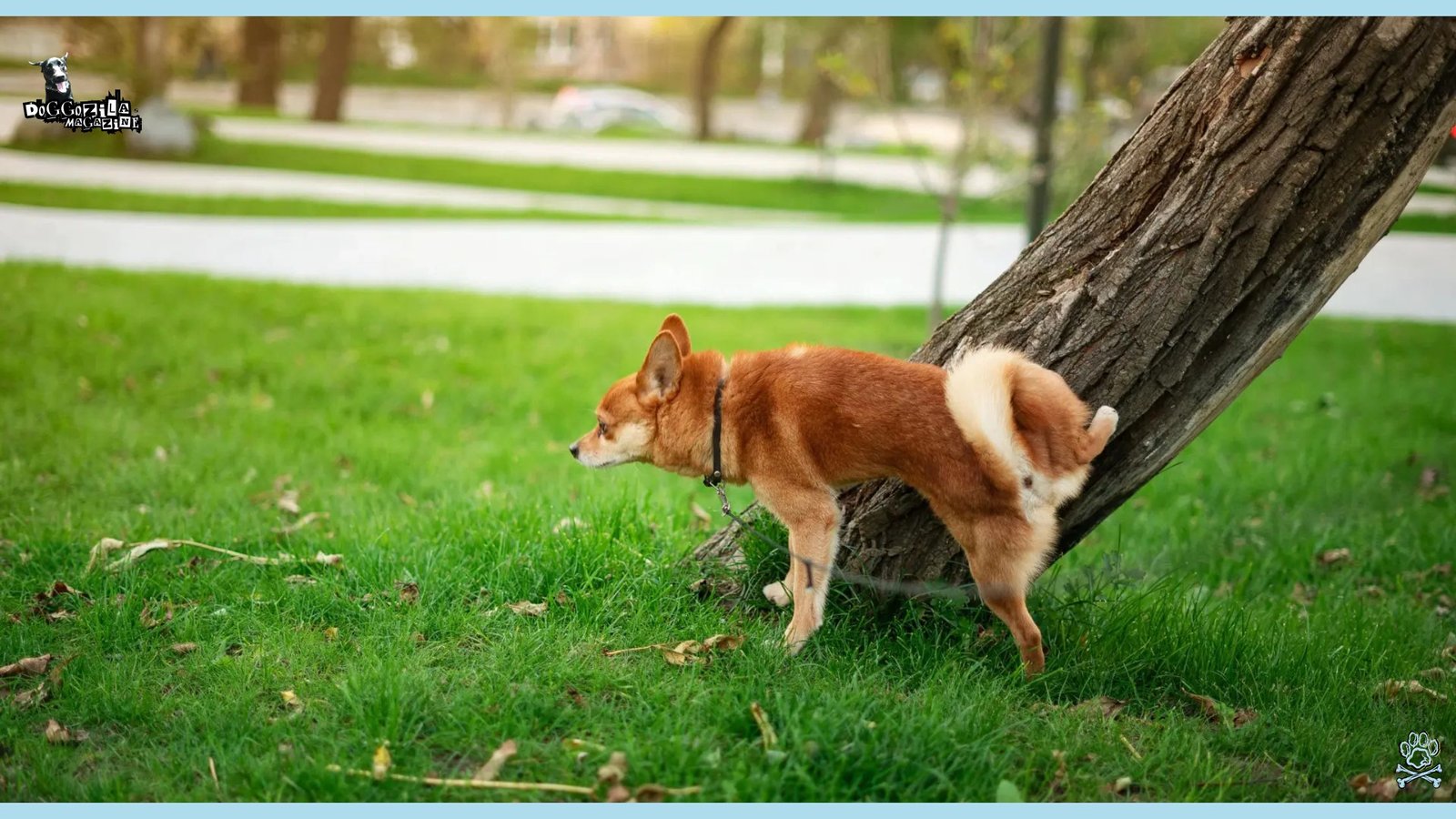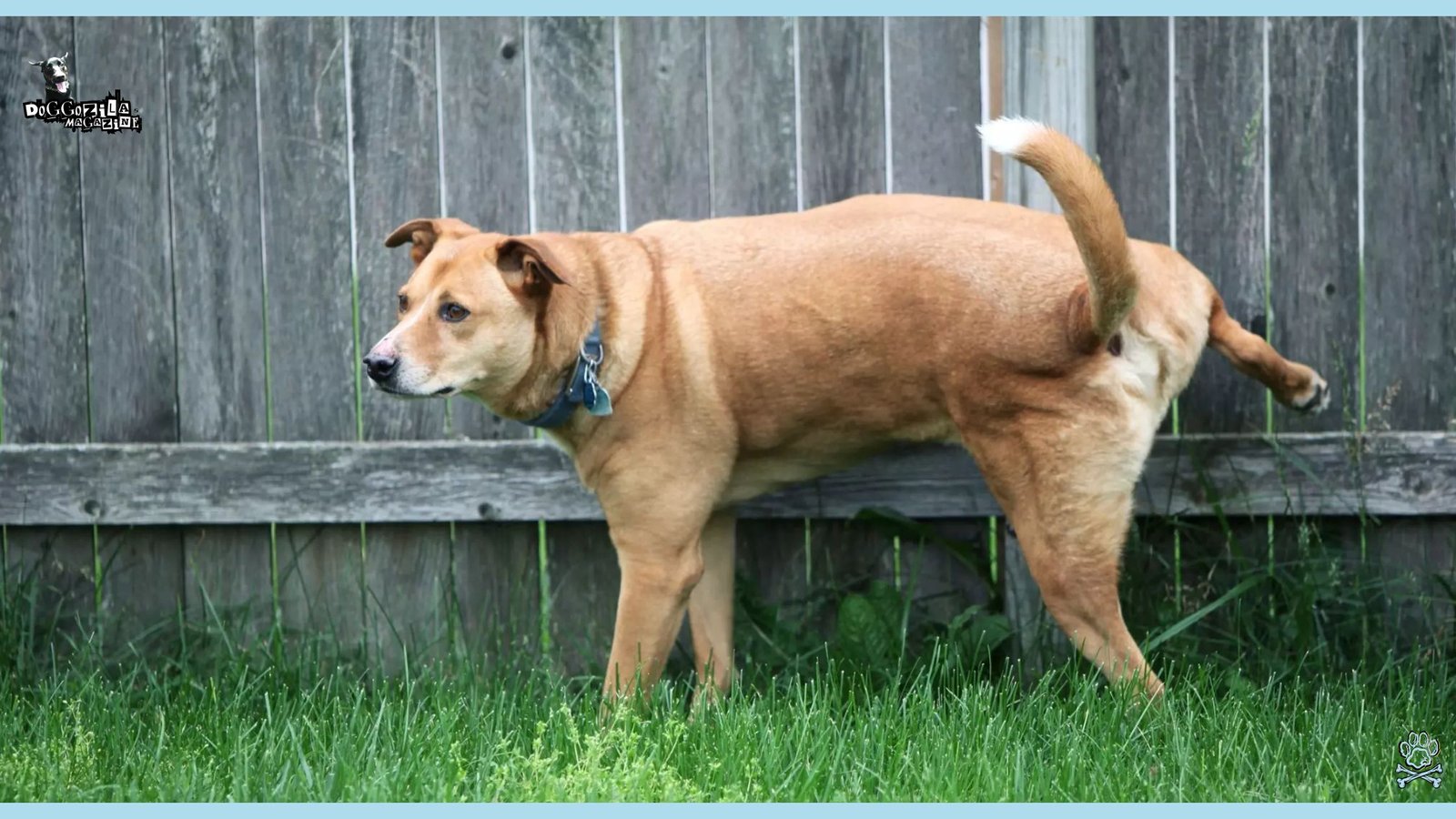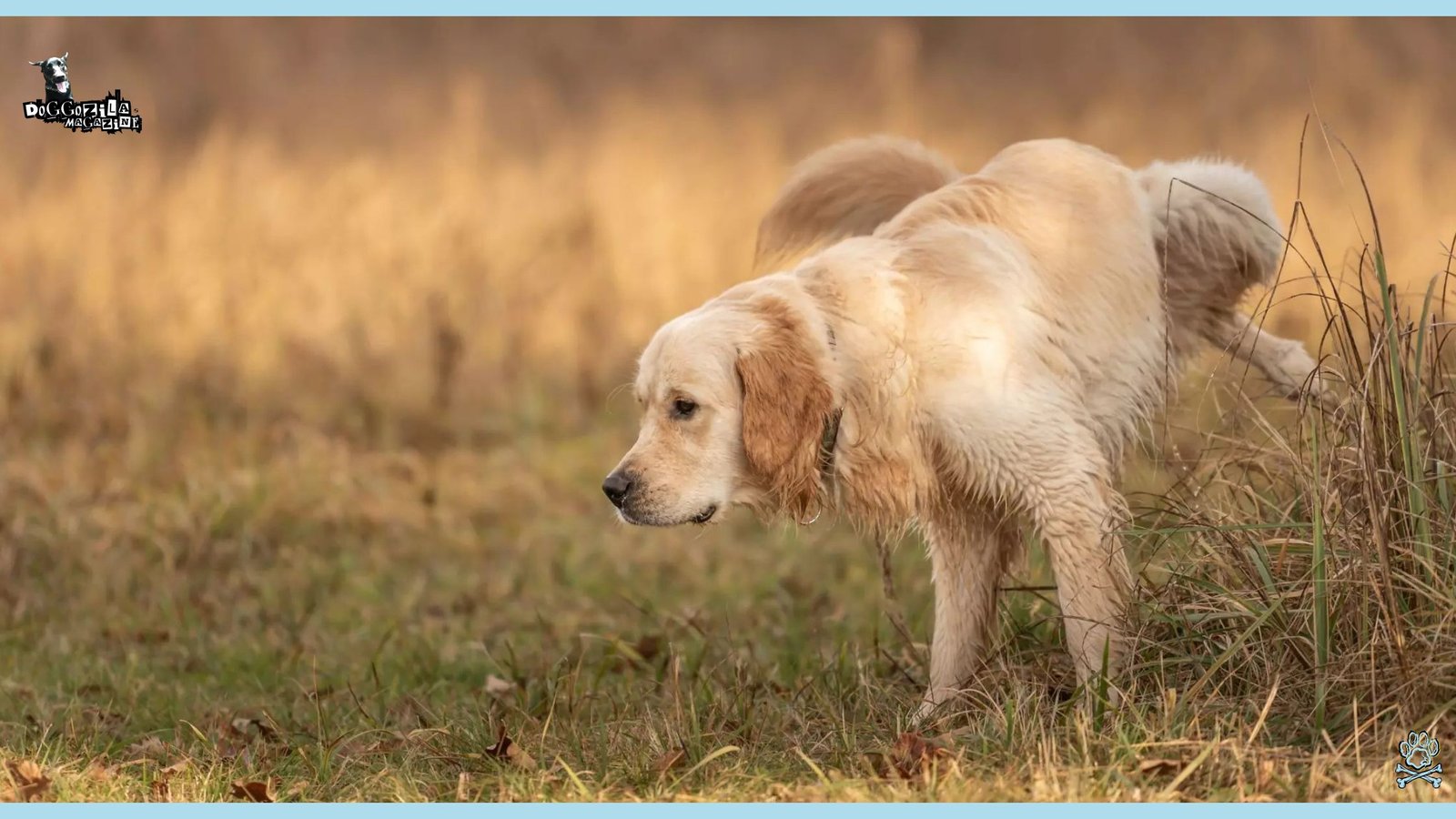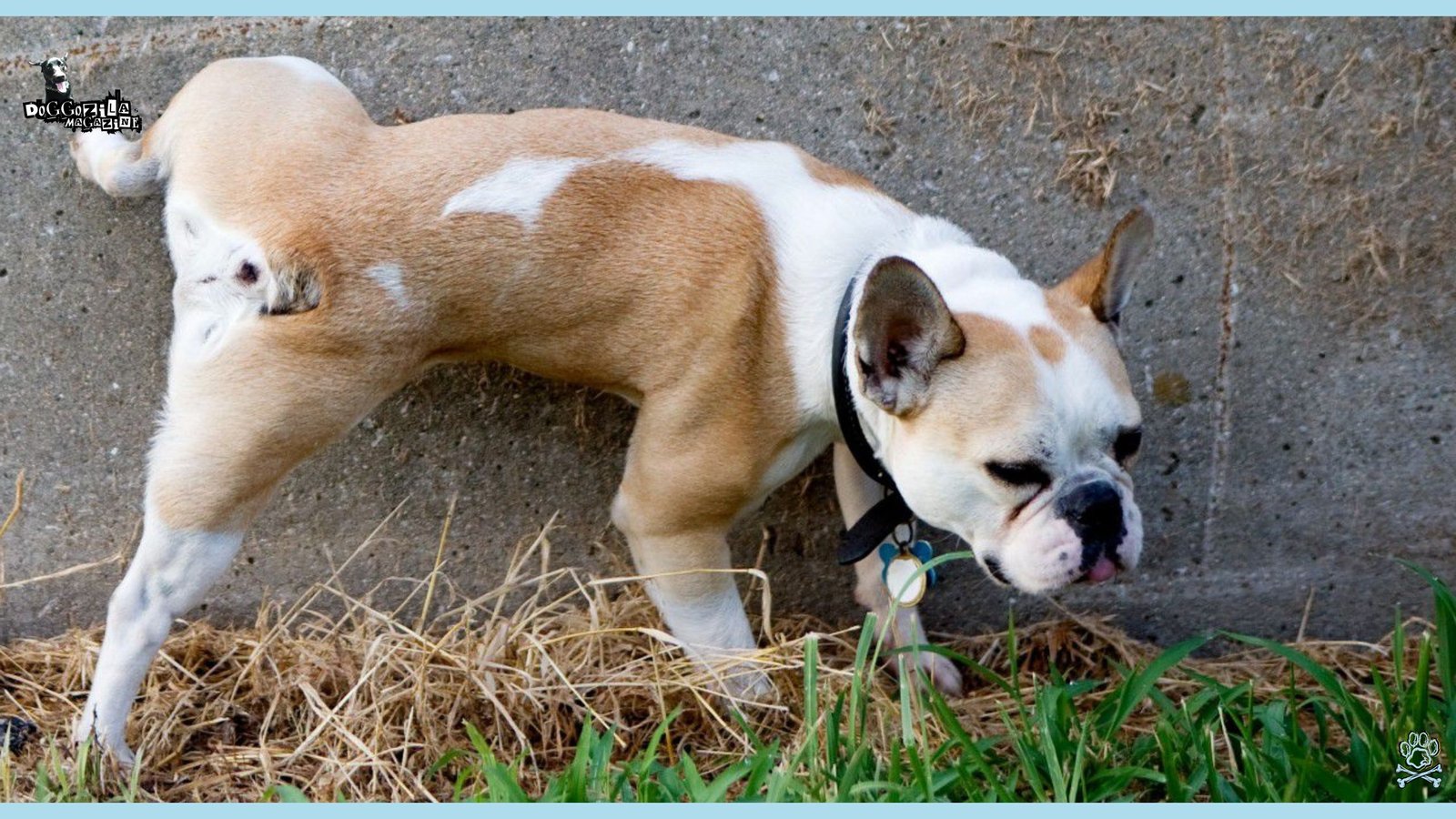It’s a story written in urine, whispered on fire hydrants, and broadcast on trees. Let’s embark on an adventure into the wild world of dog elimination etiquette and crack the code behind why do dogs lift their leg to pee.
Forget GPS trackers; dogs have been using a sophisticated, scent-based social network for millennia! One of its most visible – and sometimes baffling – signals is the classic leg lift.
While it might just seem like a convenient bathroom posture, the act of a dog raising its leg to pee is a fascinating dive into dog biology, communication, and social strategy.

THE MYSTERY OF WHY DO DOGS LIFT THEIR LEG TO PEE IN A CHANGING WORLD
Dogs have exhibited this fascinating behavior through centuries of evolution, and it offers a window into their natural instincts. The peculiar posture of leg-lifting merges both communication and territorial markings in a single act. Researchers and pet owners alike have noted that this act is intricately tied to a dog’s sense of identity and territorial presence.
Observations in both urban and rural settings reveal consistency in this behavior despite different environmental influences. This approach to urination supports the idea that dogs are not merely following instinctual routines, but are engaging in a complex social signaling method.
Exploring the Natural Instinct: Why Do Dogs Lift Their Leg to Pee and Its Cultural Impact
In many studies, scientists have observed that when dogs lift their leg, it is not only about marking territory but also about establishing social hierarchies within packs. This behavior has been witnessed in both domestic and wild dogs, suggesting it is deeply rooted in the species’ behavioral repertoire.
Observational research has indicated that dogs performing this action often look intently at their surroundings before proceeding confidently. The cultural impact of this behavior within urban settings has led to numerous debates and discussions among dog trainers and veterinarians.
Many admirers even see it as a subtle form of body language that speaks volumes about a dog’s confidence and maturity. The research literature offers expansive examples that continue to enrich our understanding of why this behavior persists over time.
Observations from Urban Parks: Dog Interactions Under Varied Environmental Stimuli
Studies carried out in busy city parks have shown that the presence of other dogs and humans influences how frequently dogs perform this behavior. Researchers have noted that dogs adapt their posture based on the density of activity around them, a signal to both friends and rivals alike.
The shifting dynamics of urban life have made it imperative for our furry companions to communicate effectively in a crowded environment. Detailed field studies have revealed that this behavioral modulation is a subtle adaptation to higher social stimulation.
Sunlit afternoons in these parks have offered ample opportunities for behavioral analysis that bridges urban ecology with dog sociology. These insights are supported by multiple observational case studies, lending a robust scientific basis to the discussion.
Case Studies in Behavioral Science: Analyzing the Habit of Leg-Lifting in Dogs
Field research involving various breeds has consistently shown that leg-lifting is connected to age and hormonal changes in dogs. Detailed case studies often include long-term observations and innovative data collection techniques to assess environmental factors.
The research integrates biological metrics with behavioral cues, offering a comprehensive view of this natural practice. Many experiments have documented changes in frequency and style of leg-lifting as dogs mature from puppies to adults.
This evidence is gathered not only from laboratory settings but also from everyday interactions that dogs have with their human families. The continuing collaboration between veterinary scientists and animal behaviorists has provided enlightening insights into the nuances of dog behavior.
🔑 Key Points: Leg-lifting is an instinctual behavior tied to territorial marking and social signaling, consistent across different environments.

SCIENCE BEHIND URINATION HABITS: DECODING WHY DO DOGS LIFT THEIR LEG TO PEE AND WHAT IT REVEALS
Scientific inquiry into this behavior has uncovered that leg-lifting is hormonal and deeply embedded within a dog’s DNA. Researchers are fascinated by the way this action ties into the physiology of both male and female dogs, even though it is more pronounced in males. These observations not only broaden our understanding of canine biology but also fortify the connection between nature and nurture in the animal kingdom.
Biological studies reveal that testosterone plays a significant role in reinforcing leg-lifting as a mark of dominance and territory. In controlled experiments, the frequency of this behavior increases in environments where competition for space is high.
The Biochemical Signals Behind Why Do Dogs Lift Their Leg to Pee During Territorial Markings
Analysis of dog urine indicates that specific pheromones are released during urination, fortifying the signal being sent to other dogs. Scientific tests have revealed that these biochemical markers are crucial for communication among dogs and serve as invisible signatures. The role of hormonal changes, especially in male dogs, has been extensively documented in recent veterinary studies.
Pet owners and animal behavior experts note that these scent markers are part of a sophisticated language that speaks to a dog’s environment. Laboratory experiments have further corroborated that such natural chemicals are consistent among varying breeds. This in-depth research has paved the way for future studies on animal communications and territorial behavior.
Comparative Analysis: The Impact of Environment on Urination Postures
Field researchers have performed comparative analyses between dogs in suburban areas and those in feral communities with striking results. Evidence suggests that dogs in high-density populations tend to lift their leg as a calculated mechanism to assert dominance among peers.
Ethological studies propose that environmental stressors may lead to subtle shifts in this habitual behavior. The interplay of chemical signaling and spatial awareness has been documented through numerous case studies in diverse ecological settings.
These systematic comparisons underscore the adaptability of dog behavior in response to environmental stimuli. The findings continue to inspire innovative perspectives on urban animal behavior research.
Hormonal Influences and the Role of Maturity in Urinary Behavior
The progression from a playful puppy to a confident adult is often mirrored by shifts in urination habits and leg-lifting tendencies. Veterinarians note that hormonal surges during puberty are a major driver of these behavioral changes.
Detailed longitudinal studies have demonstrated that early behavioral cues predict later patterns, with leg-lifting emerging as a hallmark of maturity. The synthesis of hormonal data with field observations continues to yield exciting insights into developmental biology.
This research not only enriches our understanding of a dog’s lifecycle but also adds depth to the narrative surrounding natural dog behavior. Multiple studies advocate that these behaviors are an essential part of doggy identity formation.
🔑 Key Points: Hormones (especially testosterone) play a major role in leg-lifting, reinforcing dominance and territorial claims in male dogs.

SOCIAL SIGNALS AND ENVIRONMENTAL INFLUENCES ON DOG URINATION TECHNIQUES
Dogs communicate with one another using a multifaceted set of signals that combine body language, scent, and posture. The interactions between dogs in communal environments have revealed that the ritual of urination carries significant social cues. This behavior is influenced by a variety of factors including the presence of other animals, territorial markers, and even weather conditions.
Social scientists and animal behavior experts find amusement in observing how external stimuli shape these actions in ways that are both predictable and spontaneous. The social fabric of a dog’s life is thus woven through everyday acts that serve as gateways to deeper communication.
Behavioral Nuances: Understanding Why Do Dogs Lift Their Leg to Pee in Varied Social Settings
Observations in dog parks and community spaces reveal that leg-lifting often correlates with a dog’s attempt to communicate its status. Detailed studies have shown that this behavior differentiates between passive marking and a more assertive claim over territory. The intricacies involved arise from both instinctual drives and learned experiences passed through social interactions.
Ethologists have noted that even subtle changes in the angle of the raised leg can produce a spectrum of interpretations among fellow dogs. The analysis indicates that social settings not only amplify the behavior but add layers of meaning that are still being deciphered. This expands our understanding of dog sociability and environmental adaptation.
Environmental Triggers That Shape Canine Urination Habits
Natural and man-made environments have a profound impact on how dogs choose to communicate with each other during urination. Field experiments confirm that dogs adjust their techniques based on the surrounding scents and visual markers.
Researchers have observed that everything from the density of trees to the presence of pedestrians modifies urination behavior. Environmental cues also influence the duration and frequency of leg-lifting, making each scenario unique.
This behavioral flexibility is a testament to the evolutionary adaptation that allows dogs to seamlessly integrate with their habitat. The ongoing experiments and case studies continue to unveil unexpected variables in these everyday interactions.
Social Learning and the Imitation of Urinary Behaviors
Behavioral research indicates that young dogs often mimic the actions of older, more experienced individuals during outdoor interactions. Direct observation and interactive play sessions suggest that the habit of leg-lifting spreads as a learned behavior within certain groups.
Dogs in communal spaces showcase a fascinating form of non-verbal education, wherein leaders inadvertently set social norms. Such imitation not only strengthens pack dynamics but also reinforces individual identity within the group context.
Studies have highlighted that consistent social modeling plays a central role in the adoption of these marks and postures. These observations have sparked wider discussions among scientists about the complexities of dog learning in natural settings.
🔑 Key Points: Dogs adjust their urination postures based on social hierarchy, environmental stimuli, and the presence of other dogs or humans.

THE ROLE OF MATURITY: EXPLORING WHY DO DOGS LIFT THEIR LEG TO PEE FROM A DEVELOPMENTAL PERSPECTIVE
Maturity and gender can significantly influence why and how dogs display the leg-lifting behavior. Many pet owners note that as dogs age, the frequency and style of marking undergo noticeable changes. It is observed that male dogs are more likely to initiate leg-lifting earlier than females, though exceptions exist based on social context and individual temperament.
Researchers have also identified that the behavior is tied to hormonal shifts and the establishment of social hierarchies among dogs. The transition from a youthful posture to a defined marker of territory serves as an emblem of dog maturity and gender roles within packs.
Analyzing Hormonal Changes: Why Do Dogs Lift Their Leg to Pee During Their Maturation
Veterinary endocrinologists have discovered that shifts in hormone levels during puberty directly influence urinary postures. Research has shown that the surge in testosterone is closely linked to the emergence of leg-lifting as a territorial behavior.
Detailed studies at animal behavior institutes indicate that leg-lifting becomes a signal of readiness to engage with other dogs in more assertive ways. Innovative experiments involving controlled hormone treatments have provided deeper insight into how biology shapes these actions.
Field observations complement laboratory research by further validating the hormone-behavior connection through naturalistic observations. This multidisciplinary approach has significantly enhanced our understanding of the dog maturation process.
Gender Differences in Dog Urination Postures
Observational studies reveal that male and female dogs often exhibit different postural techniques during urination. This divergence is thought to stem from a combination of biological imperatives and social conditioning that evolves over time.
In many instances, male dogs adopt leg-lifting more frequently, while female dogs tend to exhibit simpler postures. Detailed behavioral studies consistently point to these differences as markers of gender-specific communication strategies.
The comprehensive analysis of both hormonal and environmental influences sheds new light on these intriguing discrepancies. Researchers continue to delve into these distinctions to better understand the underlying factors driving such unique behaviors.
Evolutionary Perspectives on Urination Strategies
Evolutionary biologists have long argued that the development of leg-lifting is an adaptive trait that has evolved over generations. Through comparative studies of wild canids and domestic dogs, it has been observed that this behavior is rooted in ancient survival strategies.
The evolution of such an instinctual practice underscores the balance between environmental demands and social communication. Innovative case studies have pushed the boundaries of what we understand about animal behavior and natural selection.
This evolutionary lens presents dog behavior as a dynamic interplay between nature and nurture, where every gesture carries historical significance. The discussions emerging from recent fieldwork continue to challenge and refine our historical perspectives on dog behavior.
🔑 Key Points: Leg-lifting becomes more pronounced with age and hormonal changes, with males typically exhibiting it more frequently than females.

EVOLUTIONARY INSTINCTS AND BEHAVIORAL TRADITIONS IN DOGS
Across centuries, dogs have evolved a repertoire of practices that reflect both biological imperatives and cultural traditions. Many animal behavior experts engage in comparative studies that explore how wild ancestors influenced modern dog traits. These traditions are passed down through generations, manifesting in everyday behaviors that serve practical and symbolic roles.
Researchers incorporate archaeological findings and modern case studies to bridge the gap between the past and present practices of dogs. This enduring legacy highlights that many behaviors, including leg-lifting, have deep evolutionary roots that continue to evolve alongside changing environments.
Historical Case Studies Highlighting Why Do Dogs Lift Their Leg to Pee in Primitive Dog Societies
Anthropological research has often pointed to primitive dog societies as the origin of many of today’s modern behaviors. Detailed historical accounts indicate that ancient wild dogs used this technique to signal territory and social rank.
The integration of archeological evidence with modern behavioral science presents a dynamic narrative of adaptation. Extensive studies conducted in regions with longstanding dog populations have revealed remarkable continuities between past and present.
The phrase “Why Do Dogs Lift Their Leg to Pee” resonates in these contexts as a time-honored tradition of animal communication. These multidisciplinary investigations continue to uncover layers of meaning from historical records and living populations.
Cultural Significance and Traditional Marking Behaviors in Domestic Settings
Ethologists studying domestic dogs have found that many behaviors mirror those used by their wild ancestors. In many households, the act of marking is not merely a routine but an echo of ancestral survival techniques.
Observations indicate that these cultural imprints often surface during social interactions with both dogs and humans. Detailed diaries maintained by pet owners have provided rich, anecdotal evidence of the persistence of these traditions.
Researchers enjoy exploring how these time-honored practices coexist with modern training and living conditions. This rich heritage is now being revisited in innovative studies that connect behavior, cultural identity, and biological evolution.
The Intersection of Genetics and Learned Behaviors
Modern studies in genetics have unveiled that many behavioral traits in dogs are a mesh of inherited instincts and environmental learning. Researchers have conducted experiments that map behavioral genes to correlate with the tendency for leg-lifting in specific breeds.
These groundbreaking experiments weave together genetic analysis with careful observation of social interactions. The evolutionary narrative is enhanced by insights into how cultural practices are encoded in both nature and nurture.
As a result, dog behavior appears as a vibrant tapestry where genetic predisposition harmonizes with learned experiences. Such studies continue to offer fresh perspectives on the adaptive significance of everyday actions.
🔑 Key Points: The behavior has deep evolutionary roots, originating from wild dogs using scent marking for territory and social rank.

TRAINING TIPS AND POSITIVE REINFORCEMENT WHEN DOGS LIFT THEIR LEG TO PEE AT HOME
Home environments are laboratories where the subtleties of dog behavior can be observed and nurtured. Pet owners often integrate training techniques that celebrate natural behaviors while ensuring clarity in communication. The approach to reinforcing leg-lifting as a positive behavior relies on the effective use of rewards and consistent guidance. Families that enjoy outdoor activities see leg-lifting as a natural part of a dog’s expression and work to preserve it as a positive trait.
Trainers advise that understanding this behavior can foster a deeper connection between human and pet, turning everyday routines into moments of aligned communication. These practical and supportive strategies emphasize respect for a dog’s natural instincts while establishing clear behavioral boundaries.
Reward-Based Techniques for Encouraging Dogs to Lift Their Leg to Pee with Confidence
Modern trainers emphasize the role of positive reinforcement when a dog exhibits natural marking behaviors. They integrate treats and verbal praise that help the dog associate leg-lifting with positive outcomes in everyday routines.
Over time, this reward-based system encourages a confident and consistent display of natural behaviors. Detailed case studies have shown that training methods built on kindness yield lasting positive changes.
The process resembles a gradual form of social conditioning where each reward builds a stronger bond between dog and trainer. These techniques not only enhance the dog’s natural instincts but also improve overall obedience and temperament.
Establishing Routine and Consistency in Dog Behavior
Owners are encouraged to maintain a consistent schedule to help dogs feel secure and confident while allowing their natural instincts to flourish. Consistent routines support the reinforcement of behaviors and reduce confusion during transitions.
A methodical approach to daily activities can help a dog learn when and how to express natural markers confidently. Evidence from practical training sessions underscores the benefits of regular, predictable schedules in building trust.
Such a routine helps enhance communication between pet and owner and ensures that natural behavior remains both positive and constructive. This strategy has been embraced widely by trainers and pet owners alike as a key pillar of effective dog care.
Social Reinforcement: Encouraging Positive Interactions Through Shared Experiences
In a home environment, social reinforcement plays a crucial role in shaping a dog’s behavior. When multiple family members participate in training sessions, it creates a supportive and fun social atmosphere for the pet.
Regularly engaging with your dog during routine walks or park visits reinforces the natural behavior in a balanced manner. In detailed observations, dogs respond enthusiastically when positive attention is shared among group settings.
This social strategy strengthens the bond between the dog and its human companions while maintaining the integrity of its natural urges. The holistic approach unites consistent training with warm social interactions that benefit both pet and family.
🔑 Key Points: Reward-based training can encourage confident leg-lifting while strengthening the bond between dogs and owners.

COMPARING URINATION BEHAVIORS ACROSS BREEDS: A COMPREHENSIVE LOOK AT DOG ETIQUETTE
Differences in urination habits provide fascinating insights into the unique characteristics of various dog breeds. Observational studies have documented extraordinary variations in leg-lifting techniques among different breeds. These differences are influenced by genetics, lineage, and environmental conditions that shape distinct behavioral patterns.
Researchers have integrated data from multiple case studies to show that each breed carries its own signature style of marking territory. Such comparative analysis enriches our appreciation for dog diversity as well as the profound ways in which inherited traits and learned behaviors combine. These insights encourage dog lovers to celebrate every individual’s distinctive quirks.
Breed-Specific Traits and Why Do Dogs Lift Their Leg to Pee in Unique Ways
Many trainers emphasize that the specific nuances of leg-lifting behavior can vary dramatically from one breed to another. In-depth research in dog genetics supports the observation that some breeds are naturally predisposed to adopt this behavior.
Detailed analyses have shown that markers of confidence and territory are expressed differently among diverse lineages. These breed-specific traits have been documented extensively in studies that compare urban and rural populations.
Each observation adds a layer of understanding about how nature and nurture interplay uniquely for every breed. This innovative approach to behavioral research continues to inspire further exploration into the genetic underpinnings of natural dog gestures.
Comparative Case Studies: Insights from Diverse Dog Populations
Case studies that juxtapose the behaviors of small breeds with larger ones provide intriguing insights into the evolution of leg-lifting. Researchers have used a variety of observational techniques that capture the subtle differences in posture and frequency.
Consistent observations highlight that while all dogs communicate through scent marking, the style and flair often depend on breed characteristics and individual personalities. These side-by-side comparisons help validate larger trends seen in dog behavior research.
Detailed documentation in veterinary records and scientific journals supports these trends, encouraging continuous dialogue between breeders and researchers. This comparative perspective offers new ways to appreciate the complexity of dog communication.
The Role of Genetics Versus Training in Behavioral Expression
Studies have suggested that while genetics play a critical role, training and environmental interactions have a powerful influence on how behavior is expressed. A range of techniques is used to evaluate whether a dog’s marking behavior is a fixed genetic trait or a flexible skill learned through practice.
Longitudinal research illustrates that many dogs can be gently guided to express their natural urges in a balanced way through targeted training interventions. The debate between instinct and learned behavior continues to energize discussions among experts.
Data from genetic studies paired with behavioral observations reveal that the truth lies in a dynamic combination of nature and nurture. This ongoing scholarly inquiry promises to further refine how we understand and nurture our pets.
🔑 Key Points: Different breeds exhibit unique leg-lifting styles influenced by genetics, size, and environmental factors.

FUN FACTS AND SURPRISING INSIGHTS: EXAMINING WHY DO DOGS LIFT THEIR LEG TO PEE WITH AN ADVENTUROUS SPIRIT
Many pet owners are delighted to learn that everyday habits like leg-lifting carry rich backstories and surprising nuances. This behavior is not only a functional act of territorial marking but also a window into a dog’s playful personality. Enthusiasts of dog behavior celebrate these moments as small adventures filled with historical context and meaningful social signals. These fun facts continue to inspire both scientific inquiry and joyful pet parenting.
Anecdotal evidence and scientific surveys have both contributed to a more adventurous reputation for this common behavior. Every instance of a leg lift has the potential to reveal something new about a dog’s environment, background, and even personal taste.
Quirky Details: Discovering Why Do Dogs Lift Their Leg to Pee Through Fun Observations
Veterinarians and dog enthusiasts alike have shared amusing anecdotes that emphasize the unexpected charm of this behavior. Detailed storytelling coupled with scientific insight makes these accounts both educational and entertaining.
Researchers have noted that a dog’s unique posture can sometimes be interpreted as a personal signature, much like a human’s distinct style. These quirky observations have been compiled in numerous pet magazines and blogs, providing a rich tapestry of dog culture.
Each story adds depth to the understanding of why dogs communicate through leg-lifting and how they adapt it to fit their personality. The playful nature of these accounts continues to spark lively conversations and debates among pet owners.
Unique Perspectives: The Intersection of Science and Playfulness in Dog Marking
Animal behaviorists emphasize that there is much to be learned from the seemingly ordinary act of urination when viewed through both scientific and playful lenses. In controlled studies, even subtle variations in the behavior have led to unexpected discoveries about dog psychology.
Researchers have found that the way a dog lifts its leg can mirror its mood, assertiveness, and enjoyment of the environment. The interplay between instinctive drives and playful gestures underscores the complexity and charm of dog behavior.
Detailed surveys and interactive experiments have illuminated aspects of this behavior that continue to delight scientists and pet owners alike. This unique intersection of research and amusement creates a rich narrative about the daily adventures of our dog friends.
Observational Insights Without the Pressure of Perfection
In relaxed settings, dogs seem to display a natural ease when engaging in their leg-lifting rituals, free from human-imposed expectations. This unguarded behavior provides observers with genuine insights into the carefree nature of dog existence.
Anecdotal observations reveal that even in moments of play, leg-lifting serves as a subtle nod to natural instincts. The absence of perfection in these moments adds to the charm and authenticity of the behavior.
Observers note that a dog’s spontaneous act of marking its territory can bring unexpected levity and humor to daily routines. Such insights remind us that nature often balances precision with imperfection in the most delightful ways.
Leg-lifting isn’t just functional—it can reflect a dog’s personality, mood, and even playful social interactions.










